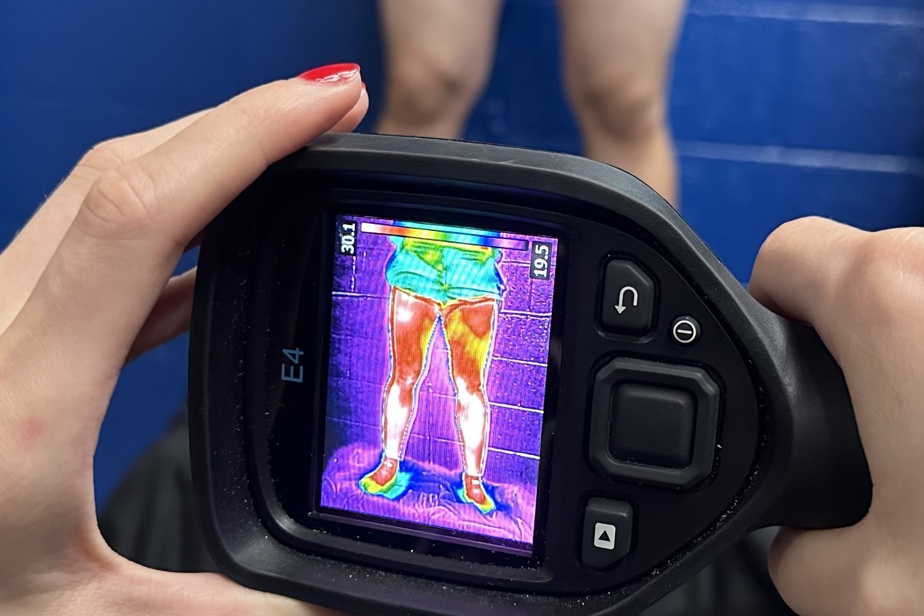Julie Lamoureux obtained her bachelor’s degree in athletic therapy a year ago.
For her master’s thesis at Concordia University, she was looking for a subject that would interest her and at the same time help her in her career. She therefore decided to carry out an “observatory” study on the use of infrared cameras in the analysis of wound healing.
The Montreal Alouettes agreed to host him to allow him to do his research.
“The ultimate goal is that we could use [la caméra infrarouge] to guide our rehabilitation and see how it is progressing to have a better return to the game, ”explains the 24-year-old woman.
But still ?
Said camera, the Flir C7 of its small name, is first used to take a photo of the start, when the athlete is in good health. Five photos are taken: two of the upper body, two of the lower body and one of the knees. The images make it possible to determine the temperature of each part of the body: hot being white, yellow or red and cold being blue or purple.

PHOTO CHRIS WATTIE, REUTERS ARCHIVES
The use of infrared in the musculoskeletal field is still a novelty.
When a player is injured, a new photo is taken as soon as possible, ie the day of the injury or the following day.
“Often, with an injury, there is an inflammation process,” says Ms.me The lover. We would therefore expect that there would be an increase in temperature. On the camera, you would see that one knee is more white or red compared to the other.
“While the person is doing their normal rehabilitation with therapists, we take pictures to see if the camera detects temperature changes, to monitor the healing progress of the injury. »
During the rehabilitation process, the tissues heal and the temperature, logically, will gradually decrease until it regains “symmetry” with the other leg.
Long-term
For now, the project is exactly that: a project. The Alouettes players who volunteered to participate were photographed in the last week of June; these are the initial photos, or the “data collection”. The process will start if one of them gets hurt.

PHOTO PROVIDED BY JULIE LAMOUREUX
Julie Lamoureux
The results collected during the study will be confidential and will only be used to assess whether the camera “measures the temperature change”. They cannot therefore be used by the Alouettes’ chief athletic therapist, Tristan Castonguay.
Hence the term “observational study”.
“Eventually, it would be to use it for our rehabilitation, for example to see which part of the leg is still inflamed or hotter than another region. It’s a little more objective as a measure to have the visual in front of you. »
The Flir C7 has the advantage that it is small, portable, and poses no risk, unlike other types of imaging.
“There is no radiation, notes Julie Lamoureux. […] It’s super quick to do and can be done by pretty much any medical professional. You just have to know how to use it.
“If, for example, I want to take pictures on Tuesday, Wednesday, Thursday, it’s much easier because I can do it myself. I don’t need to make an appointment, it doesn’t need to be a specific professional (MRI). »
Infrared has already been used in other areas, such as with fractures, Ms.me The lover. But in the musculoskeletal field, it is still new. If the study is focused on football, passion of the native of Dorval, the camera could one day be used for injuries in other sports.
Mme Lamoureux insists, however, that the camera cannot be used to give a diagnosis and that it cannot be used “to return players to the game”. That said, “to help with monitoring, it’s easy to use every day, if you want,” she summarizes.
